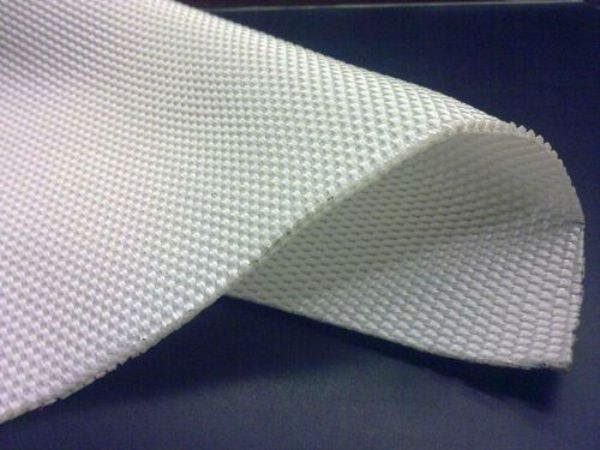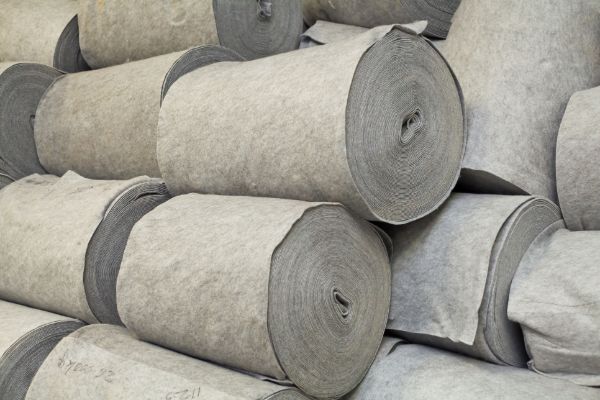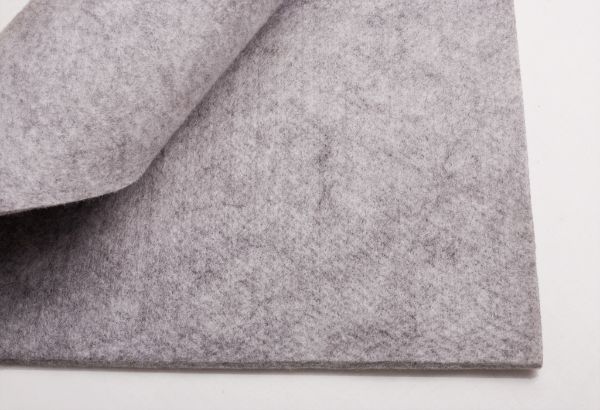Geo Fabric
Fabrics have a lot more applications than you may think. Agricultural and ecological conservation are also heavily reliant on fabrics. To assist reduce erosion and preserve soil structure, we utilize permeable fabrics called geotextiles. It’s a fabric that the Earth wears. It turns out that Mother Nature enjoys a good fabric just as much as we do.
Geotextiles are man-made materials that help to prevent soil degradation. Geotextile fabrics are robust, rot-resistant artificial or man-made fabrics with various degrees of porosity. Polyester and polypropylene are two common polymers used to make geotextile fabrics.

Types of Geo Fabric

Polymers like polyester and polypropylene are used to make geotextiles. They are categorized into three groups on the grounds of the manner they are made:
- Woven geotextile fabrics
- Non-woven geotextile fabrics
- Knitted Geotextiles
Specifications of Non-Woven Geo Textile
- Color: White, Gray
- Weight: 100 gsm – 1000 gsm
- Thickness at 2kPa: 0.92 mm – 9 mm
- Length: upto 100 meter (max)
- Width: upto 5.3 meter (max)
Specifications of Woven GeoTextile
- Color: White, Gray
- Weight: 100 gsm – 1000 gsm
- Thickness at 2kPa: 0.92 mm – 9 mm
- Length: upto 100 meter (max)
- Width: upto 5.3 meter (max)
Specifications of Woven Geotextile
- Roll Length: upto 200 meter (max)
- Roll Width: upto 5.4 meter (max)
- Output: 250 ~ 300 M / per set
- 1300 ~ 1500 square meter / set / day
Specifications of Woven Geotextile
- Roll Length: upto 200 meter (max)
- Roll Width: upto 5.4 meter (max)
- Output: 250 ~ 300 M / per set
- 1300 ~ 1500 square meter / set / day
Functions of Geo Fabric

Fabrics made with geotextile have various fundamental purposes. They are able to:
- Prevent layers of materials from lowering or dissolving into one other by separating them.
- Drain water-logged regions while leaving the soil in position.
- Filters are useful in collecting particular materials and preventing drain clogs.
- Retain layers in position to strengthen earthen constructions like drains and embankments.
- In locations like highways and coastlines, geo fabric safeguard and defend against erosion.
- Geotextile fabrics are used in a variety of sectors, including construction site and civil engineering
Benefits of Geo Fabric
The benefits of geo fabric are indisputable:
- The substance is extremely eco-friendly since it does not degrade into chemical elements, making it completely safe for individuals and the ecosystem.
- The cloth is extremely strong and can bear mechanical stress, as well as penetrating and ripping stresses.
- External variables have no effect on Geofabric. Because the fabric does not bleach or deteriorate when exposed to sunlight or moisture, it is frequently utilized for insulating purposes.
- Because it is manufactured in the shape of compact, light-weight rolls, geomaterial is simple and convenient to carry. With scissors, cutters, a knife, or a manual saw, cut the fabric into the required parts.
- In locations like highways and coastlines, geo fabric safeguard and defend against erosion.
- Because of its low cost, the fabric may be used in a variety of sectors.
Uses of Geo Fabric
Geo fabric has a wide range of applications in engineering and other sectors as well. The uses of geo fabric are described below
Work on the Road
Geo fabric are frequently utilized in road constructing. It adds tensile power to the soil, which strengthens it. The geotextiles must maintain their permeability while maintaining their dividing functions since they are utilized as a quick de-watering level in the road surface.
Railway Construction
When the ground is unsteady, woven or non-woven materials are employed to divide the soil from the subsoil without obstructing groundwater movement. Each layers are encased in cloth to protect them from swaying sideways owing to shocks and vibrations from passing trains.
Agriculture
It is used to keep muck at bay. Nonwoven geo fabric are used to enhance sloppy roads and pathways used by livestock or low traffic, and they are stretched by overlapping to contain the pipe or a pile of grit.
Canal system, rivers, and coastal works
River banks are protected by geotextiles against erosion caused by currents or wearing down. They operate as a filtration system when applied in combination with native or artificial enrichments.
Water drainage
The usage of geo fabric to filtrate soil and a somewhat uniform particulate material to convey water is rapidly being considered as a theoretically and practically feasible substitute to traditional methods. Drainage in earth dams, roads and roadways, dams, behind retaining walls, deep drainage ditches, and agricltural is filtered using geo fabrics.
Why Choose B. J. GEOTEXTILE LIMITED?
B. J. Geo-textile Limited is mainly nonwoven needle punched geotextile producers. With years of experience, we are among the top nonwoven needle punctured textile producers and distributors.
We provide basic and bespoke needle pierced nonwoven geotextiles made of polyester or polypropylene that are suitable for a variety of industry applications along with horticulture plant growth. We’re also skilled at creating jute fabrics that aren’t woven.
The pyrolysis and porosity of jute needle pierced nonwoven geotextiles make them ideal for propagation of seeds and erosion prevention. We are extensive technical expertise, the best grade needle pierced non-woven geotextiles, geosynthetic materials, and designed solutions to satisfy unique needs.
Our nonwoven needle punched textile is meant to be utilized in a range of industrial purposes as a bespoke nonwoven fabric producer. These are some of them:
- Purification in the opposite direction
- Safeguarding of the soil
- Stabilization of soft soil
- River side and seaside erosion prevention Separation and stabilizing of the soil layers
- Foundation Strengthening and Land Restoration are two aspects of shoreline preservation.
FAQ
Woven. Woven Geotextiles are strong, finely spun strips of linen, polypropylene, or polyester material. It is typically impermeable, and water drainage through the material is minimal.
Geo fabric used in combination with a properly sized coarse sand will not clog over time.
Geo fabric have been expected to last for up to 200 years. By virtue of its chemical composition, molecular structure, and thermodynamic properties, polypropylene is one of the most resistant organic raw materials known today.
Conclusion
Finding the best suitable and location specific geotextile fabric is critical for achieving the intended outcomes. Woven and non-woven are the two main regularly utilized varieties. The efficacy of the goods has propelled the extraordinarily quick expansion of the geotextile industry.
B. J. Geo-textile Limited is mainly nonwoven needle punched geo fabric producers. Earth stability, erosion avoidance, drainage management, coastal defense, and other building needs are all addressed with nonwoven needle punched fabric.
We are one of World’s top nonwoven needle punched geo fabric producer, with years of professional experience. We provide conventional and customizable needle punched non-woven geotextile fabric made of polyester or polypropylene that are suitable for a variety of industry applications as well as gardening plant growth.
The comprehensive details of our product will help you to get your desired geo fabrics instantly at B. J. GEO-TEXTILE LIMITED. Therefore, if you are looking for the best kind of geo fabric, feel free to reach us instantly.

